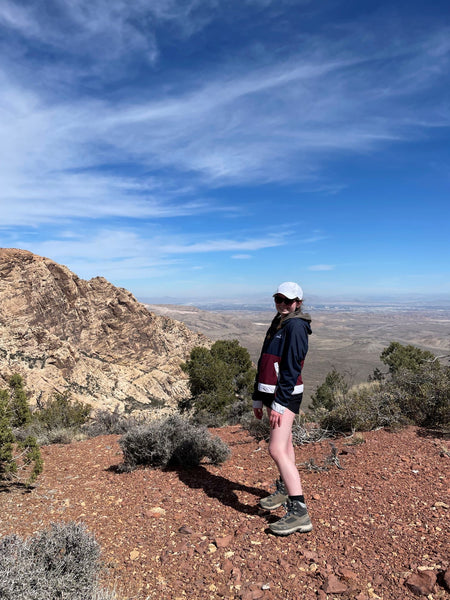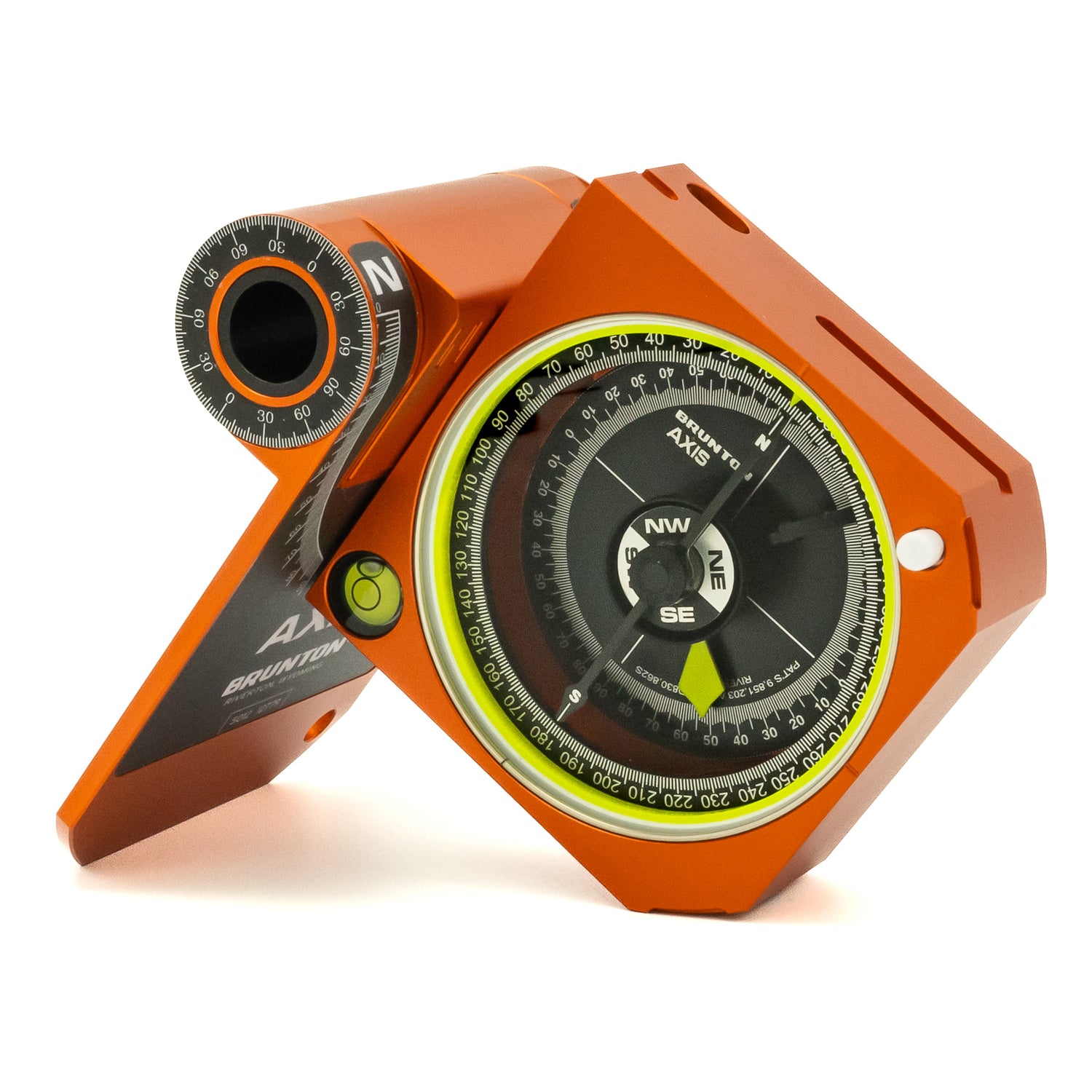We proudly sponsor the Annual Brunton Award for the Association for Women Geoscientists (AWG) - created to promote the future of field mapping and data acquisition for the upcoming generation of women geoscientists. This award goes to female-identifying geoscience students at the senior level or in their early graduate studies who has been a summer intern, excelled at field camp, or performed field data collection that leads to a senior or graduate thesis.
This year we are proud to award Laura Mulrooney and Francesca Burkett the 2022 Brunton Award. Each awardee is gifted an engraved Brunton Transit of their choice, up to $1000 to support field activities, and a 1-year AWG membership.
Read more about Laura's and Francesca's work below.
LAURA MULROONEY: Graduate Awardee
"As an undergraduate in geology at the University of Florida, I’ve been involved with field work since my freshman year. I started with trips around the southeast cumulating in a spring break class at Big Bend National Park which was my first experience of being dropped in the middle of no-where struggling to distinguish between different beige limestones while fighting through cactus. To most people, this doesn’t sound like fun-but for me, I was hooked."

"I also started research as a freshman and had the opportunity work on numerous projects focusing larging on answering tectonic questions using geochronology, thermochronology, geochemistry, and structural geology working with Dr. David Foster and Dr. Jim Vogl."
"In the past 2 summers, for my undergraduate thesis, I spent 8+ weeks in south-central Idaho sampling, mapping, and making field observations of the Pioneer Intrusive Suite: contributing to understanding the Pioneer Metamorphic Core Complex. I had a wonderful opportunity working on complex rocks with a variety of geologic problems; and discovered firsthand how temperamental field work can be: it seems the longer we spend the more questions we leave with! My thesis involved field observations and mapping, geochronology and thermochronology, geochemistry, and hand sample and thin section petrography. I spent time mapping and collecting structural data and samples for my thesis- and exploring the intrusive relationships relative to dome formation of a range of compositions including everything from leucogranites to ultramafic pyroxenites and hornblendites. All of which, I am currently in the process of turning into a publication in addition to my university hosted thesis; and presented my ever-growing results at the past two annual GSA meetings."
"In fall 2021 I started my PhD at the University of Florida, continuing with my same advisors, but switching from working in Idaho (as I am finishing that project) to Alaska. I will be applying structural geology and metamorphic petrology to map and understand the tectonics of the Hammond shear zone and the subsequent opening of the Canada Basin from the Brooks Range in Northern Alaska. This project involves several months of field work for the next 2 summers as I map, sample, and make observations of the various blueschist, greenschist grade rocks as well as the eclogites in the area."

"I am currently a TA for structural geology where I teach the labs and will assist on their field trip; and I also will be a TA for the University of Florida’s field camp this summer, and likely in future years as well. This allows me to share my passion for field work with future geologists which is something that’s always been important to me. As I’ve taught structural geology this spring, I’ve gotten to introduce my class to the use of Brunton compasses and its so much fun to work with them as they discover all the wonderful hands-on things they can discover in the field."
"What I love most about field opportunities is the sense of community that they build amongst students: which fosters peer mentoring. My first field experiences as a freshman were led entirely by senior undergrads who wanted to share their experience and passion: and as a senior I tried to do the same. However, during the 2020-2021 school year nearly all residential field experiences were cancelled. To get around this, I worked with our departments IAGD representative and using her knowledge and resources, built several virtual field trips: one of which I presented at GSA in spring of 2021. I took what I learned from my own virtual field camp and applied this to these virtual trips to make them fun, interactive, and engaging. These virtual field trips allowed me to reach all levels of students in our department and learn from them, what they wanted in the virtual field experience. This was extremely important to me as it allowed students who for a variety of reasons may not have normally been able to participate in a typical field experience to gain those skills as well as develop the sense of community that is intrinsic to geologic field work."
"I would like to thank my advisors Dr’s Jim Vogl and David Foster for affording me many opportunities to work on wonderfully complex geologic problems both in my undergraduate experience and as I continue my graduate education. And I would like to thank AWG and Brunton for offering this award and continuing to encourage students of any and all backgrounds to follow their passion-wherever far or wide it may lead them."
FRANCESCA BURKETT: Undergraduate Awardee
"Geologic processes and the hazards relating to them are global issues. It is vital to not only study them, but also to involve and inform both scientists and the public. Through my different research projects, field activities, and extracurricular activities, I seek to find ways to communicate between the global scientific community and the public. Throughout my undergraduate study, I have conducted lab experiments to understand how other fields of geology relate to geophysics."

"As an intern with the Illinois State Geological Survey since fall of 2019, and I have had the opportunity to assist in field mapping, sample collection and preparation, identification in the lab with petrographic microscopes, and learned to use a wide range of tools. I have created multiple databases and reviewed notes and samples with the Hick’s Dome cryptovolcano and surrounding region. More recent projects that I worked on were bedrock mapping projects throughout southern Illinois, mapping New Madrid and Wabash Valley faults, and the area surrounding Hick’s Dome area. I also mapped a quadrangle in central Illinois using ArcGIS, bedrock studies, and analyzing oil well logs. I am currently converting several Illinois bedrock map databases to be compliant with USGS standards, as well is ISGS standards."
"From 2018-2020, I assisted the Henson lab with GPR scanning and imaging of crayfish burrows. Through this research project, I learn to use several types of GPR units to take imaging data from areas hosting different crayfish populations. In addition to the crayfish project, I was also had the chance to use GPR in a more archeological setting. I imaged the sub-foundations of several buildings that were burned down a several decades ago."
"I have also had different classwork mapping projects. Spring of 2021, I took a field mapping course with Joseph Devera. We mapped bedrock geology throughout the Shawnee forest (including Giant City), Dutchman Lake, and faults through Grand Tower. This past summer, I took a 6-week field mapping course in Montana, Idaho, and Wyoming, mapping areas such as Bear Tooth Mountain near Red Lodge Montana, Block Mountain, and Frying Pan Gulch. Throughout these areas, I mapped Laramide and Sevier structures. Our projects covered sedimentary geology, stratigraphy, paleontology, geomorphology, structural geology, tectonics, igneous and metamorphic petrology, glacial geology and glacial till mapping, and economic geology. I would hike to the highest points just to be able to see as far as I could—trying to see how all the pieces fit together. I learned how to visualize 3D structures in the field, and to explain and discuss them with my mapping partners. Each of the mountains and structures told a story, and I wanted to understand and explain it."
"Currently, while I am continuing to work for ISGS on southern Illinois mapping projects, I am also finishing a capstone project for my Ancient Practices Minor, which ties together history and geology through a study of ancient historical processes with geological studies. Assisted by a NEH grant, I am recreating Roman Concrete. In addition to using an XRD to identify minerals in the concrete, I am conducting engineering strength tests on the samples. I am using a mix of lime (which I slaked in the lab ovens), volcanic ash from Italy, and seawater to recreate the concrete, and at each stage, testing the amount of stress the concrete samples can withstand. I have also added a section of this analysis to consider how changing the ash composition affects the strength of the concrete. In addition to using the rhyolitic Italian ash, I have also tried a basaltic ash composition for the concrete."
"These different projects and experiences have all assisted helping me to continue researching and finding answers to scientific questions and telling the stories behind geologic processes. Through telling these stories, I seek to find ways to better explain and understand the earth process and hazards involved with them. I am graduating in May with degrees in Geology and History, as well as with minors in Mathematics, Environmental Studies, and Ancient Practices. After graduating, I will be pursuing graduate studies in tectonics and structure. I have already performed earthquake analysis modelling through internships and classes and field work, and I will continue working on this, as well as pursuing interests in tectonics and structure. After graduate study, I hope to continue field work as a geologist specializing in structure and tectonics as either a research professor or through working for a state or US Survey."


